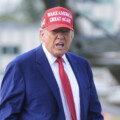The past several years have witnessed a trend of new and higher taxes on high-income earners in the name of equity and fairness. The federal government’s new tax on luxury goods such as luxury cars, private jets and yachts,Q&A: Canada’s New Luxury Goods Tax https://www.bdo.ca/en-ca/insights/tax/tax-articles/luxury-goods-tax/ which came into effect earlier this month, is the latest example.
These policy efforts to “make the rich pay” are not however costless. There are real trade-offs in the form of indirect and longer-term economic effects including less investment, innovation, and entrepreneurship.
Yet there isn’t much reason to think that policymakers are grappling with these considerations. In fact, if anything, based on past and recent comments from Prime Minister Trudeau and NDP leader Jagmeet Singh, there’s some reason to think that more of these types of tax hikes will be forthcoming.
In order to better understand these trade-offs, we recently published a studyIn an MEI study, published on September 14, 2022. that examines four incremental tax changes that reflect the spirit of previous “tax-the-rich” measures, including:
- A one percent wealth tax levied on fortunes over $10 million
- An increase in the capital gains inclusion rate from 50 percent to 75 percent
- An increase in the personal income tax rate from 33 percent to 35 percent for incomes over $216,000
- An increase in the federal corporate income tax rate from 15 percent to 18 percent
While there are currently no specific plans to enact these measures, they follow in the same conceptual and normative vein as the new federal luxury tax and therefore provide useful insight into the costs and consequences of this type of policy thinking.
Our research aimed to understand the unexpected and possibly adverse effects of policy changes that neglect these economic trade-offs. The findings ought to be a salutary warning.
First of all, we found that wealth taxes discourage savings and investment and in turn represent a drag on economic growth. The unexpected result though is that they can actually reduce government revenues. An estimate of the impact of implementing such a tax in Germany,The Economic Effects of a Wealth Tax in Germany https://www.ifo.de/DocDL/dice-report-2018-2-fuest-neumeier-stimmelmayr-stoehlker.pdf for instance, found a direct gain of 14.7 billion euros in revenues per year, but at the cost of a GDP loss of more than five percent and a resultant loss of other tax revenues—income tax, value added tax, corporate tax, and so on—of 46.1 billion euros. This means, in the end, government revenues suffered a net loss of 31.3 billion euros a year.
We also observed that increasing the capital gains inclusion rate could harm Canada’s international competitiveness. There’s some evidence, for instance, that it could reduce the influx of foreign investment and in turn penalize small business funding and capital transfer. These costs would similarly be represented in forgone economic activity.
As for increasing the top federal personal income tax rate from 33 percent to 35 percent, this would have various effects on the behaviour of high-income earners including leading to non-productive activities like greater tax planning. It would also interfere with the efforts by companies to attract global talent. The net result is that we estimate it would generate a fiscal loss of around $212 million per year between the federal and provincial governments.
Finally, like the previous measures, hiking the federal corporate income tax rate would also undermine Canada’s international competitiveness, as well as harm our ability to attract firms, reduce corporate profitability, and lower productivity growth. These costs would be borne by everyone involved including investors, workers, and consumers.
The key point here is that while “making the rich pay” may be a catchy slogan, it comes with significant trade-offs for the economy and the government’s bottom line that require more attention from policymakers.
The evidence from our analysis in particular is that these efforts to raise the tax burden on high-income earners come with a multitude of adverse effects that would push economic actors and companies to invest less, to work less, to move, and to export their capital and wealth.
Even proponents of greater equity and fairness in the tax system ought to recognize that the trade-offs—particularly in cases where tax hikes actually produce net losses in government revenues—are not worth it.
Ottawa should instead favour policy reforms that boost economic competitiveness, especially relative to the United States, in order to create greater opportunities for individuals to secure jobs and earn higher wages. A pro-growth agenda can be tremendous means toward these well-intended ends.
At a minimum, though, the government must keep in mind that making the rich pay more ultimately means making everybody pay more.
Recommended for You

The Notebook by Theo Argitis: Mark Carney’s first major tests

The Weekly Wrap: Trudeau left Canada in terrible fiscal shape—and now Carney’s on clean-up duty

‘Another round of trying to pull capital from Canada’: The Roundtable on Trump’s latest tariff salvo

‘We knew something was coming’: Joseph Steinberg on how Trump is ramping up his latest tariff threats against Canada



